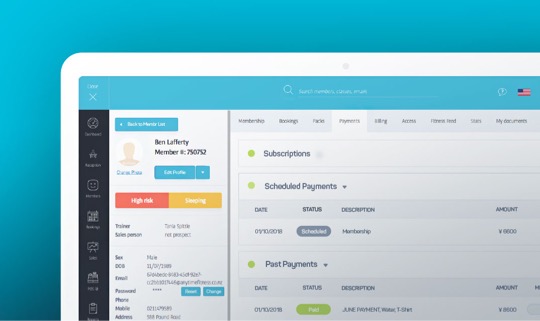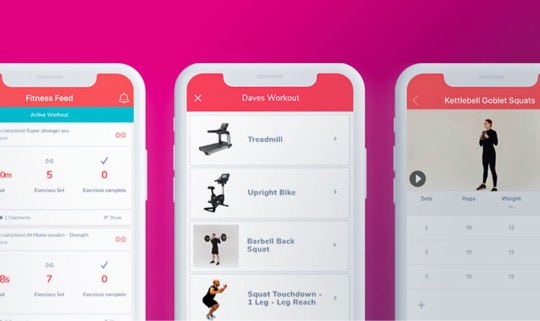To all Personal Trainers (PT’s) out there, and those perhaps managing PT’s… This blog is one for you. Let me firstly start with a simple question: Are you maximising your PT income in the most efficient way that you possibly can? If you’re fully booked with individual 1-1’s, working all hours of the day and you have a waiting list starting to build up, the answer is probably no!
Personal training used to mean that you were 1-1 with the client. Not any more! Over the past decade or so, we’ve seen partner and small group training become more popular. That isn’t to say that it’s the end for 1-1’s though. In fact, research suggests that 1-1 training still provides the greatest income for PT’s, and it is likely to continue to remain that way. You may well be delivering a combination of 1-1, partner and small group personal training to your clients. Whether you are or not, the intention of this blog is not to tell you what is right or wrong. What I would like is for you to question yourself as a trainer/manager and potentially review your business model to ensure you are reaching, or even excelling, your business targets. The questions, thoughts and ideas within this blog may help you to challenge yourself that little bit more to ensure you are working off the most time-efficient, financially-sound PT business model. At Membr we are always looking to help you build a 4 product PT business and small group training is a vital one of those……
Although the logistics of partner and small group sessions can be a little more challenging than 1-1 PT sessions – as business owners and/or trainers, you can reap the awards. Not only that though, your clients can also benefit from partner and small group training! Below, I have detailed a few points on why this model can be a valuable option for the business, you as the trainer, and for your clients.
How the business can benefit:
- An Additional Revenue Stream. It’s not the intention to take away from your private 1-1 training revenues, but rather appeal to a different type of client in offering partner and small group training.
- More Money. You can increase your hourly income. Two clients could mean that you are earning up to 50% more, and three clients plus could potentially more than double your hourly income.
- More Individualised Service. Potential clients may think they don’t need 1-1 training if they don’t have a major health or fitness problem. However, they may be happy to participate in small-group sessions. This allows them to get more personalised attention than if they were just training on their own on your gym floor.
- Increased Retention. You as the trainer get to know more members at a quicker rate, and create a good rapport with them. This in turn can allow for the gym members to have a better experience and develop a sense of belonging – compared to if they were just coming in and doing their own thing alone.
How the trainer can benefit:
- Extra Money. Whether you’re an individual trainer, own your own business or work for someone else, you can earn additional money through partner or small-group training. For example, if you as the trainer have a group of four, you could earn almost 60% more than if you train 1-1 for that time.
- Time Efficiency. If you train any clients at their homes, and you train multiple clients in a single home visit, there’s definitely a cost savings in travel time.
- More Potential Clients. Some clients may feel safer/more comfortable in a small group because of the numbers. The small group may even be the stepping-stone to 1-1 training for an individual who would definitely benefit from 1-1 training, but still might not feel comfortable approaching a trainer.
- Burnout Prevention. Partner and small-group training can also add variety for you as the trainer. It could be a nice change from your more regular 1-1’s and potentially ignite more training ideas and help keep your sessions varied and enjoyable – for you and your clients.
How clients can benefit:
- Less Money. Multiple-client training can provide a more cost-effective service for your clients, since it usually costs less per person than 1-1 training. It’s a good way of trying to remove/reduce that financial barrier that some potential clients may have.
- More Support. Some of your clients may be a little competitive, and working out with like-minded partners can help to motivate and really push towards the desired goals your clients have. For others, it could also work the other way… For example, if you have a few individuals who are convinced that they have the worst coordination in the world, when they exercise with friends, they realise that everyone has different strengths and weaknesses, and they are not as bad as they perhaps first thought.
If you’re reading this blog and it’s getting your attention and you’re wondering about whether or not you are maximising your PT Services, have a read of some ideas regarding business structures below. They may help you gain some ideas about ways in which you could establish client partnerships and small groups:
- Defining Set Times and Topics:
- Offers several small-group sessions in 4- to 6-week additions.
- Ensure your partner or group sessions are scheduled for certain days and times.
- Sessions run for 30–60 minutes and centre around specific topics, such as
- “Strength for Women – Beginners,”
- “Back Health”
- “Rugby S&C”
- Creating Small Groups, Depending on Need.
- Offer a specific group program (e.g. Rugby S&C)
- If an interested client can’t do it when it is offered, they can ask for the program to be repeated at a more suitable time. Ask them to organise their small group of clients (maybe their team mates) who would all be able to make the same times
- If a client knows two or three other people are interested in the same program, you have a group to work with. If not, you can advertise the program in question to other members in order to get the group filled.
- Selling Session Contracts.
- Offers your clients a flexible arrangement as far as purchasing sessions.
- For example, clients could buy contracts of 4, 8 or 12 sessions (with a pre-agreed expiration date)
- Each time your client has a session session, ensure you sign the session off.
- For a group, you could offer: “Every third session is FREE” if two or more of the group attend. Therefore, if only one person shows up, they are charged as a single individual and that session doesn’t count as one of the ‘three’ shared with friends. This means, for example, clients can take 12 sessions for the price of eight.
As always in the business world, there are bound to be challenges! It’s important to put strategies in place to deal with these potential business problems, and you may well already have these in place. If you do, then you’ll be aware that it can be a bit trickier to deal with partner or small group session contracts compared to 1-1 PT contracts. Below are some business concerns that could arise, but please bare in mind that the points are by no means exhaustive.
Dealing With No Shows – The biggest issue!
- It is crucial to have a well-defined policy and to communicate it to clients
- If no-one shows, and there has been no communication, the session should be charged for
- For partner sessions, if one client cannot make the session, you could reschedule for a date that suits both of them
- Within small groups, all individuals should pay for their block of training (4-6 week block for example) up-front. If they miss a session, they don’t get their money back
Handling Space Constraints.
Another challenge is making sure there is enough space to train your small group without inconveniencing others who may be working out on their own
Addressing Clients Who Talk Too Much.
Some clients may chat more in a group setting and not pay enough attention to your sessions. This is about setting your standards from the off, and if you have any on-going issues, it may be worth having a 1-1 friendly chat with them to make them aware that it is affecting the enjoyment (and potential success) of others in the group
Meeting Unrealistic Client Expectations.
- It is key to explain the pros and cons of multiple-client training, so your clients won’t be disappointed
- Clearly communicate about the expectations and limitations of small-group or partner training versus 1-1
- Ensure your clients are aware that they always have the option of going private if they want more attention and personalised programming
If you can overcome the challenges associated with partner or small-group training, this business model can provide valuable revenue streams for you and your business, as well as providing clients with a more financially viable option compared to 1-1 session. This combination of being more affordable, together with more personalised attention in shared sessions than clients would get in a normal studio class appeals to many people. Further still, not only are shared sessions a great way to reduce your total workload as the trainer, on the flip side, it could free up more time to gain even more clients. All in all, these shared – partner and small group sessions provide a great opportunity for you as trainer, your business, and your clients to benefit from, in all respects. So, the question is… Are you maximising the way in which you offer your personal training services?













